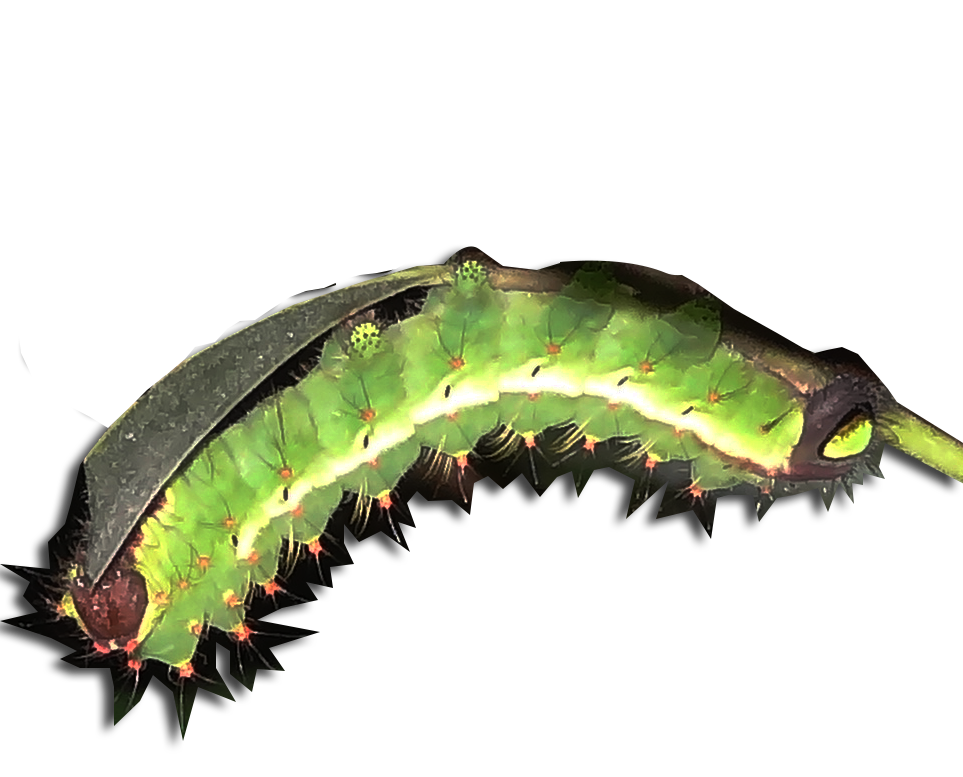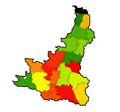Silkworm Food Plant Production Technology
Food Plant Production Technology of Tropical Tasar
Primary food plants:
Eight primary food plants for tropical tasar silkworm have been reported viz. Terminalia tomentosa W. & A. (Asan), Terminalia arjuna W. & A. (Arjun), Shorea robusta Roxb. (Sal), Lagerstroemia parviflora Roxb. (Sidha), Lagerstroemia speciosa Pers. (Jarul), Lagerstroemia indica Linn. (Saoni), Zizyphus mauritiana Lam. (Ber) and Hardwickia binata Roxb. (Anjan).
Secondary food Plants:
Of the more than two dozen secondary food plants so far reported, the most important are Terminalia chebula Retz.(Haritaki), Terminalia belerica Gaertn. (Bahera), Terminalia catappa L. (Jangli badam), Terminalia paniculata Roth. (Kinjal), Anogeissus latifolia Wall. (Dhaunta), Syzygium cumini (L.) Skeels (Jamun), Careya arborea Roxb. (Kumbi) and shorea tailura Roxb.
Distribution:
The food plants of tropical tasar silkworms grow luxuriantly at low altitude (0-600 msl) between 40˚ north and south latitudes.
Vegetative propagation
Seedling propagation of tasar food plants, though slow, is common practice, as they cannot be easily propagated asexually. Asexual propagation has been successfully achieved, however, in some food plants.
Cottage:
The propagation of hardwood by cottage is rather difficult. To a limited extent, Terminalia arjuna stem cuttings can be induced to root in a special type of mist chamber. Lagerstroemia indica has been propagated by treating cuttings 1.0-1.5 cm thick and 18-20 cm long with seradix B2/B3 and inserting them in soil or a porous rooting medium. It is also possible to propagate Zizyphus mauritiana with the help of root- inducting hormones.
Grafting and budding:
Terminalia arjuna and Syzygium cumini can be propagated by approach grafting , or inarching, and Zizyphus by cleft grafting. Both the Forkert budding and T-buuding methods can be used on Syzygium cumini, and only the latter on Zizyphus mauritiana.
Layering:
Terminalia arjuna and Zizyphus mauritiana can be propagated by air layering. A ring of bark about 3 cm long and 1.5 cm thick is removed from a twig. The debarked area is treated with seradix B2/B3, covered with “gootee” (FYM and soil in equal parts, plus some moss) and wrapped with polythene. After sufficient rooting has occurred (within 4-6 weeks), the portion of the twig below the layer is cut off and transplanted. It is also possible to perpetuate Terminalia arjuna by ground layering.
Plantation in the main field
The pits (30cm x 30cm) are filled with a mixture of soil, 10-20 kg of FYM/compost and 100-200 g each of “karanj” cake, bone meal, wood ash and aldrin dust (5%). Transplanting should be done in June and July. A basin should be prepared around the base of each transplant.
Economic Plantation:
Tasar food plants as found in nature are tall trees irregularly distributed in forests or no bunds of paddy fields. Because of the consequent difficulties of overseeing the larvae, mortality from pests and diseases is high, particularly during the early instars. As the foliage consumption of larvae until the third instar is only 15-20%, this problem can be solved effectively by rearing them in limited systematic plantation. Economic plantations of Terminalia arjuna from 2 to 3 year saplings closely spaced (1.2 x 1.2m) become suitable for rearing within 3years. The higher density of trees per unit area yields over 17 MT of foliage/hectare. Furthermore, being of the medium bushy type with overlapping twigs, tasar food plants can be rainfed and grow in submarginal soils, which are widespread in India.
Block plantation:
consists in the setting aside of forest patches having a high concentration of primary food plants for systematic rearing operations. The number of tasar food plants in such areas should be increased gradually. These plantations can be gainfully utilized for advance-stage rearing of larval population initiated on economic plantations.
Training:
The tasar food plants have a tendency to grow tall; but effective rearing, plants about 2-3 m tall with rich foliage and a well – spread crown are ideal. Of the three common training systems – central leader, open centre and modified leader- the last is recommended for economic plantation. In this case the central axis is not allowed to grow indefinitely. In natural plantations it is desirable to pollard the trees 1-2 m above the ground level in March and April every 3 to 4 years.
Source:
FAO Agricultural Service Bulletin- Manuals on Sericulture, reprinted by Central Silk Board, Bangalore

